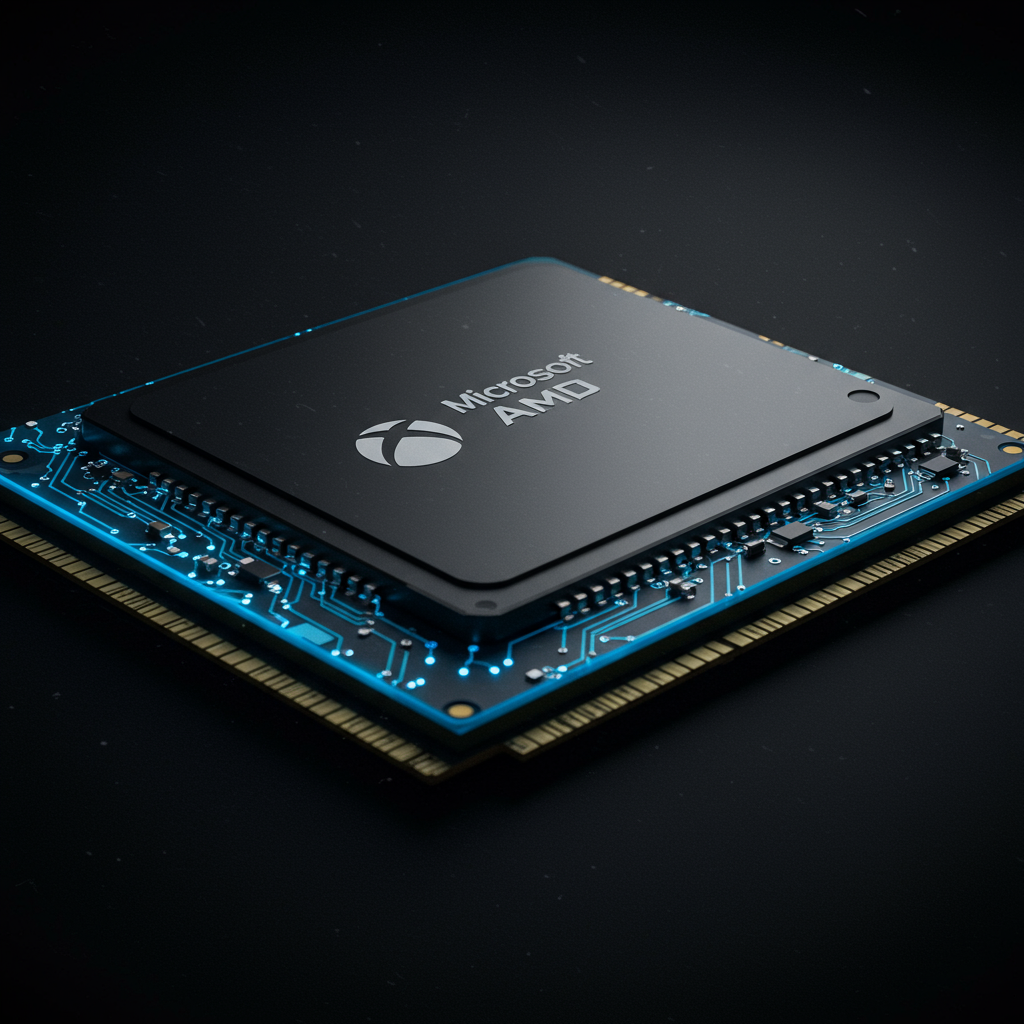Microsoft and AMD have announced a significant multi-year strategic partnership focused on co-engineering custom silicon for the future of Xbox gaming. This collaboration extends beyond just the traditional living room console, aiming to power a broad portfolio of devices designed for the next generation of gaming experiences.
The heart of this agreement is the development of custom silicon specifically tailored for Xbox’s upcoming hardware. This includes the highly anticipated next-generation Xbox console and is also expected to underpin future devices like handheld gaming systems and the infrastructure for Xbox Cloud Gaming.
Advancing Gaming Technology
The technical goals of this partnership are ambitious. By working closely with AMD, Microsoft intends to push the boundaries of gaming hardware, delivering:
Deeper visual quality: Aiming for enhanced graphics and realism.
Immersive gameplay: Creating more engaging and believable game worlds.
- AI-powered experiences: Integrating artificial intelligence to potentially enhance everything from NPC behavior to graphics rendering.
- finance.yahoo.com
- www.theverge.com
- venturebeat.com
- gaming-age.com
- www.videogameschronicle.com
A Platform Not Tied to One Device
Xbox President Sarah Bond highlighted that this collaboration is central to Microsoft’s vision for a gaming platform designed for players, allowing them to “play the games you want across devices anywhere you want.” A key tenet of this strategy is building an “Xbox experience not locked to a single store or tied to one device.”
This multi-device approach includes console, PC, handhelds, and cloud gaming. Microsoft is working closely with its Windows team to ensure synergy, reinforcing Windows as a premier platform for gaming. The recent launch of handhelds like the Asus ROG Ally, which runs Windows and accesses multiple game stores including Xbox and Steam, exemplifies this direction.
Crucially for existing players, Microsoft is committed to maintaining backward compatibility. The next-generation Xbox console will be designed to be fully compatible with your existing library of Xbox games, protecting players’ investments in their digital collections.
Industry Context and Microsoft’s Strategy
This deal reinforces the long-standing relationship between Microsoft and AMD, as AMD has provided the custom chips for previous generations of Xbox consoles. AMD also powers Sony’s PlayStation consoles, positioning them as a dominant force in the console silicon market, while competitor Nvidia supplies chips for Nintendo’s Switch line.
The timing of this announcement comes as the industry anticipates a new wave of hardware, including the recently teased Nintendo Switch 2. This sets the stage for a renewed “console war,” where hardware capabilities powered by chip partnerships like this will play a critical role. AMD’s expertise in integrated processor and graphics designs makes them a strong partner in this space.
The investment in next-gen hardware aligns with Microsoft’s broader gaming strategy, which includes the significant growth of its Xbox Game Pass subscription service, major content acquisitions like ZeniMax, and increasingly making some of its first-party games available on rival platforms like PlayStation. This shift towards a more platform-agnostic content distribution model in certain areas complements the hardware vision of not being tied to a single store or device.
Financially, gaming is a key part of Microsoft’s “More Personal Computing” segment, which has seen strong growth, driven in part by Xbox content and services. This partnership with AMD is a strategic move to ensure future hardware can support this continued expansion and the evolution of the Xbox ecosystem across various form factors and experiences.




